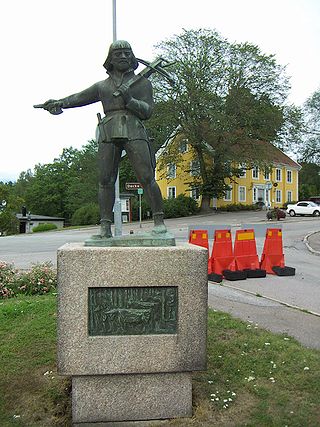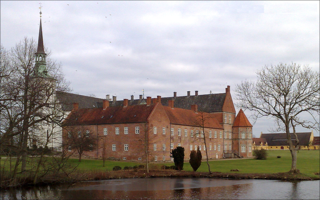
The Peasants' Revolt, also named Wat Tyler's Rebellion or the Great Rising, was a major uprising across large parts of England in 1381. The revolt had various causes, including the socio-economic and political tensions generated by the Black Death in the 1340s, the high taxes resulting from the conflict with France during the Hundred Years' War, and instability within the local leadership of London.

Christian III reigned as King of Denmark from 1534 and King of Norway from 1537 until his death in 1559. During his reign, Christian formed close ties between the church and the crown. He established Lutheranism as the state religion within his realms as part of the Protestant Reformation, and was the first King of Denmark-Norway.

Valdemar II Valdemarsen, later remembered as Valdemar the Victorious, was King of Denmark from 1202 until his death in 1241.

Christopher, known as Christopher of Bavaria, was King of Denmark, Sweden (1441–48) and Norway (1442–48) during the era of the Kalmar Union.

Frederick IV was King of Denmark and Norway from 1699 until his death. Frederick was the son of Christian V of Denmark-Norway and his wife Charlotte Amalie of Hesse-Kassel.

Valdemar IV Atterdag, or Waldemar was King of Denmark from 1340 to 1375. He is mostly known for his reunion of Denmark after the bankruptcy and mortgaging of the country to finance wars under previous rulers.

Eric VI Menved was King of Denmark (1286–1319). A son of King Eric V and Agnes of Brandenburg, he became king in 1286 at age 12, when his father was murdered on 22 November by unknown assailants. On account of his age, his mother ruled for him until 1294.

Christopher II was King of Denmark from 1320 to 1326 and again from 1329 until his death. He was a younger son of Eric V. His name is connected with national disaster, as his rule ended in an almost total dissolution of the Danish state.

Nils Dacke was a Swedish yeoman who was the leader of a mid-16th century peasant revolt in the historic province of Småland in southern Sweden. The resulting Dacke War was fought against King Gustav I of Sweden of the Vasa family. It was the most widespread and serious civil war in Swedish history and almost toppled the king.

The Count's Feud, also called the Count's War, was a war of succession that raged in Denmark in 1534–36 and brought about the Reformation in Denmark. In the international context, it was part of the European wars of religion. The Count's Feud takes its name from the Protestant Count Christopher of Oldenburg, who supported the Catholic King Christian II, deposed in 1523, over the election of Christian III, a staunch Protestant who had already implemented Lutheranism as the state religion in Schleswig and Holstein in 1528.

JohanRantzau was a German-Danish general and statesman known for his role in the Count's Feud. His military leadership ensured the succession of Christian III to the throne, which brought about the Reformation in Denmark.
Events from the 1380s in England.

Brahetrolleborg is a castle about 10 kilometres north-west of Fåborg on the Danish island of Fyn. Before the Reformation it was Holme Abbey, a Cistercian monastery.

Store Heddinge is a Danish town in Region Sjælland. It is the administrative seat of Stevns Municipality, and has a population of 3,649.
Events from the year 1710 in Denmark.
Events from the year 1797 in Denmark.
Events from the 1530s in Denmark.

Pederstrup is a historic manor house located 12 km (7.5 mi) north of Nakskov on the Danish island of Lolland. The half-timbered building from 1686 was rebuilt from 1813 to 1822 in the Neoclassical style by the statesman Christian Ditlev Frederik Reventlow. Since 1940, it has housed the Reventlow Museum.

Saint Jørgensbjerg Church is a historic church in Roskilde on the Danish island of Zealand. With a nave and chancel in travertine limestone dating from c. 1080, it is Denmark's oldest preserved stone building.

Sankt Jørgensbjerg is a district of Roskilde on the Danish island of Zealand. Initially a fishing village in its own right with a history dating back to the Viking era, it became part of Roskilde in 1938. Today it has become the most desirable district in the city.
















